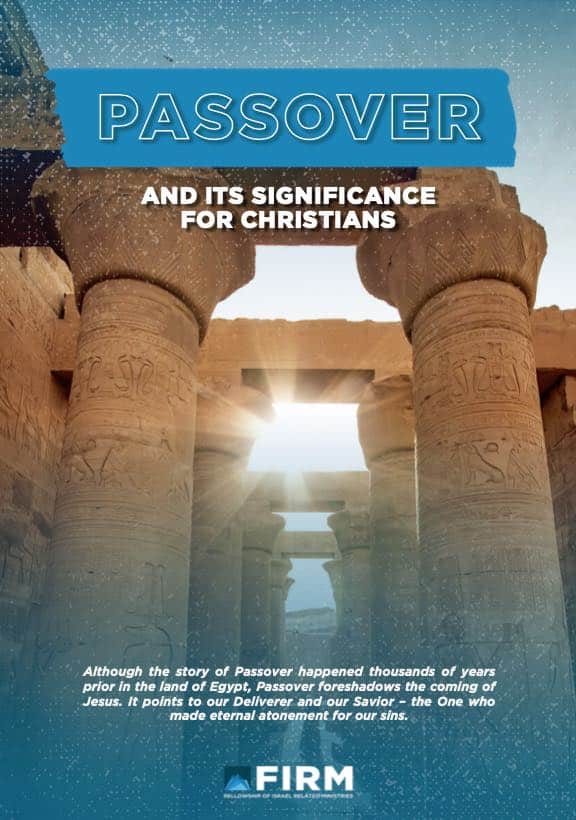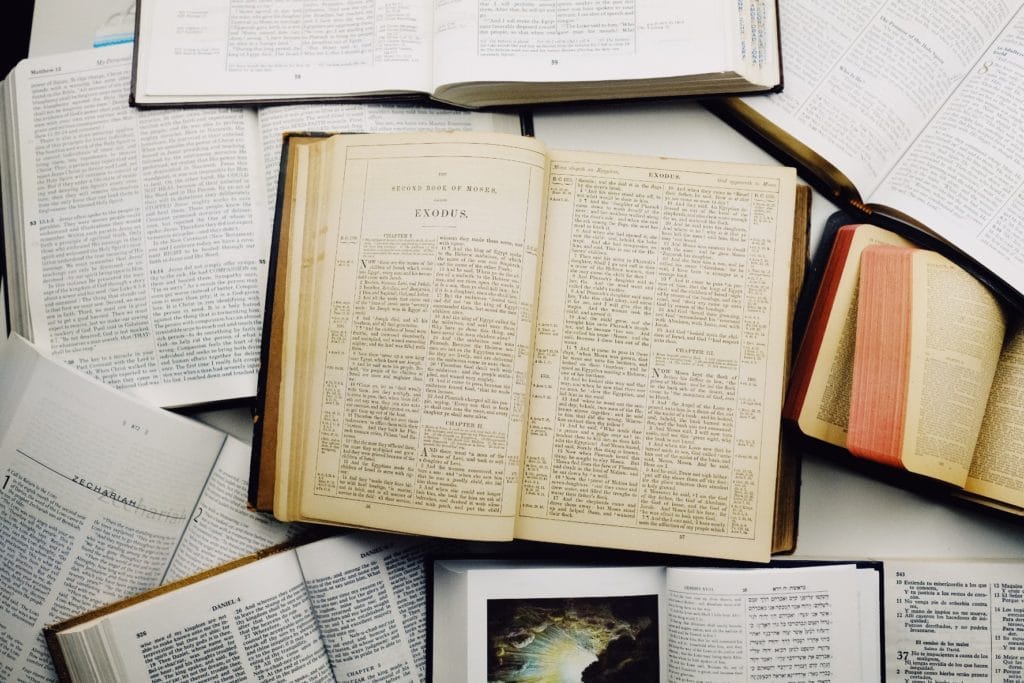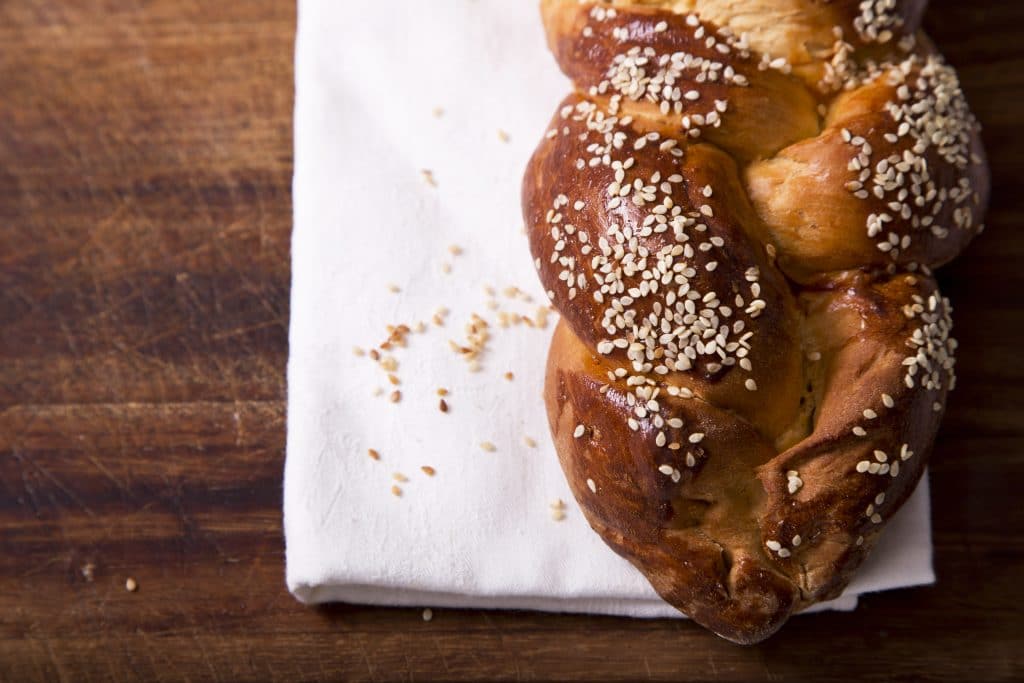Holy Communion
You are probably familiar with the concept of taking communion in the form of bread and wine (or grape juice).
The practice of holy communion is common in Christian churches, as it follows a commandment given by Jesus. He told His followers to take it in remembrance of Him.
But did you know that these two essential elements, bread and wine, were part of a Jewish feast that Jesus was at the time celebrating? We need to explore the origins of this holy ceremonial, to fully grasp its significance.
Download your FREE Passover PDF:
The Meaning Behind Holy Communion
Simply stated, communion is an act or time of sharing in intimate fellowship. We may not naturally associate these words with communion, but actual synonyms for communion are closeness and unity. Which makes more sense when put in its biblical context.
Communion is a sacred time of fellowship with God, where believers remember Jesus’ sacrifice on the cross.
In this unique time of worship, believers commemorate the Lord’s death through prayer and meditation. It is accompanied by partaking of a small piece of bread and sip of wine (or grape juice).
While it may appear simple, there is so much contained in it. There is so much that God has made available to believers in communion. While on the one hand it is a celebration, it’s not a silly or playful experiment. There is a certain weightiness to it.
The purpose of communion is to “receive from Christ the nourishment and strength and hope and joy,” said pastor and theologian John Piper.1 They “come from feasting our souls on all that He purchased for us on the cross; especially His own fellowship.”
What does Scripture say about Holy Communion?
The gospels of Matthew, Mark and Luke all record that while celebrating Passover, Jesus established communion with his disciples. Which is later reiterated and expanded upon by Paul in 1 Corinthians 10 and 11.
Now while they were eating, Jesus took some bread, and after a blessing, He broke it and gave it to the disciples, and said, “Take, eat; this is my body.” And when he had taken a cup and given thanks, He gave it to them saying, “Drink of it, all of you, for this is my blood of the covenant, which is being poured out for many for the forgiveness of sins. Matthew 26:26-28
Paul’s instructions in 1 Corinthians 10 and 11 is considered the primary biblical text on communion. It addresses the manner in which believers should approach the communion table.
Whoever, therefore, eats the bread or drinks the cup of the Lord in an unworthy manner will be guilty concerning the body and blood of the Lord. Let a person examine himself, then, and so eat of the bread and drink of the cup. For anyone who eats and drinks without discerning the body eats and drinks judgment on himself. 1 Corinthians 11:27-29
Atonement in the Blood
The blueprint of communion has been part of the picture for thousands of years prior to Jesus’ words in Matthew 26. And the people of Israel were quite familiar with the necessity of the shedding of blood for the atonement of sin.
The life of the animal redeemed the life of the sinner, made way for the forgiveness of sins. And made it possible for the people to be restored to right standing before God.
Hebrews 9:22 tells us that forgiveness only comes through an outpouring of blood.
“For our sake he made him to be sin who knew no sin, so that in him we might become the righteousness of God.” (2 Corinthians 5:21)
Holy Communion on Shabbat?
Jesus intentionally referenced a well-known sacrificial model when he established communion. He further draws the connection by doing this during the celebration of Passover.
The breaking of bread (matzoh) and drinking of wine at Passover serve as key reminders of Israel’s deliverance from Egypt. Jesus coupled these familiar elements of the Seder with his death and the establishment of the New Covenant.
Now the Passover Seder not only reminds us of God’s faithfulness to deliver Israel from physical slavery in Egypt. But also deliverance from sin for those who put their trust His Son.
Given the common elements, bread and wine, believers may wonder about a connection between communion and shabbat.
That is not a common association among the Jewish people, and not even among Jewish believers in Jesus. As far as we know, the elements are the extent of the connection.
Are Holy Communion, Eucharist and Last Supper One and the Same?
While there is a connection and a clear link between the meaning of “Holy Communion” and the “Eucharist”, there are also differences.
The word Eucharist, a noun, is derived from the Greek word eukharistia. The Eucharist is the word that the Catholic Church uses to refer to the bread and the wine, believing they are the Body and Blood of Jesus.
In the Early Church the word expressed “giving of thanks”, as we see in Matthew 26:27: And when He had taken a cup and given thanks (eucharisteo), He gave it to them, saying, “Drink from it, all of you.”
Eucharist vs. Communion
The word Communion on the other hand is a verb. As what we do is a “communion with God” or being “in communion with believers”.
Paul uses the Greek word koinoea in 1 Corinthians 10:16-17. He is describing why the believers should not take part pagan rituals for doing so is to become part of the pagan culture.
Is the bread that we bless not a communion (koinonea) in the blood of Christ? The bread that we break, is it not a communion in the body of Christ? Because there is one bread, we who are many are one body, for we all partake of the one bread. 1 Corinthians 10:16-17
In short, Holy Communion and the Eucharist are references to the same sacrament, a re-enactment if you will. It is what Jesus’ inaugurated during His final meal on earth – thus the name “Last Supper”.
The Significance of the Last Supper
This final meal that Jesus shares with His disciples is noteworthy because it speaks to the importance Jesus placed on fellowship. He emphasized gathering together, enjoying a meal, and ministering to other believers.
It points our hearts forward to His return to this earth, and the establishing of His kingdom forever. The Last Supper invites us to participate in and take partnership in Jesus’ death.
Those who eat and drink in a worthy manner partake of Christ’s body and blood, not physically, but spiritually; in that, by faith, they are nourished with the benefits He obtained through His death, and thus grow in grace. – Bethlehem Baptist Church Elder Affirmation of Faith
Why Do We Take Holy Communion?
As if all this wasn’t enough, in His abundant nature, God offers a multitude of provisions through our participating in communion.
Take a look at 1 Corinthians 10:18 and what happens in the temple sacrifices. We note that those who eat the sacrifice also enjoy some benefit from what transpires on the altar.
Consider the people of Israel: are not those who eat the sacrifices participants in the altar? 1 Corinthians 10:18
Could it be that when believers partake of the communion elements physically, we are also participating in Jesus’ death in a spiritual manner as well?
John Piper phrases it this way, “By faith—by trusting in all that God is for us in Jesus—we nourish ourselves with the benefits that Jesus obtained for us when he bled and died on the cross.”2
He made it possible for us to have peace and right standing with God. Jesus made it possible to live in freedom and not fear, to have hope for the future. He brought deliverance from sickness and disease, wisdom to walk in the light and have confidence.
This ordinance is one of celebration and also one of spiritual covering.
Symbolism and Elements of Holy Communion
There are two physical elements of communion, the bread (often unleavened matzoh) and the wine (sometimes grape juice).
The bread used for communion signifies the body of Jesus, which was broken for us. He took on all sin, iniquity, rebellion, disease, grief and shame.
The wine (or grape juice) represents His blood, which was shed to establish a new covenant. It brought the forgiveness of sins and sets us apart in holiness.
These two pieces became the elements of communion because they are the same elements that Jesus picked up from the Passover table. And on the first night of Passover is when He inaugurated the ordinance of the Lord’s Supper for us as believers.

Passover and Its Significance for Christians: Free PDF Download
Passover is one of the seven feasts, often called “the appointed times,” listed in the Hebrew Scriptures. It is one of the most well known Jewish holidays.
When you request this PDF you’ll get the bonus of receiving fascinating articles, an exclusive insider view into what God is doing in Israel today, plus weekly updates.
Articles Related to Holy Communion – Its Purpose, Origins and Power
Estimated reading time: 8 minutes
[Bibliography]
1 John Piper, Idolatry, the Lord’s Supper, and the Body of Christ, 1 Cor. 10:14-22, www.DesiringGod.org.
2 John Piper, https://www.desiringgod.org/messages/why-and-how-we-celebrate-the-lords-supper#full-video


